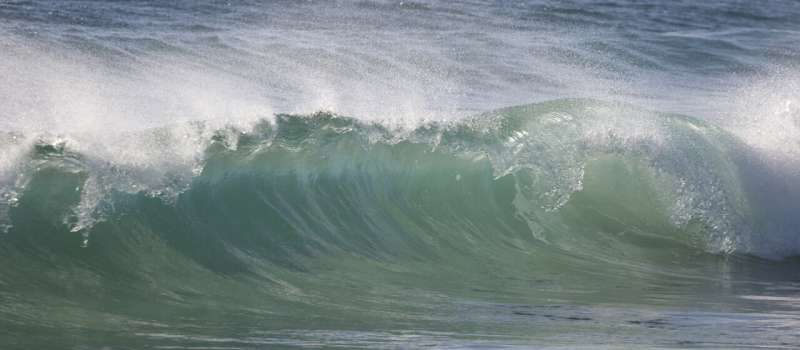| | | Seas are now rising higher than some buildings' underground garages
by Chrystian Tejedor, Florida International University
 Credit: Florida International University Credit: Florida International University
Sea level rise has more consistently pushed underground water closer to the surface—sometimes reaching underground levels of coastal buildings, according to a new study conducted by Florida International University's FIU Institute of Environment.
FIU coastal geologist Randall Parkinson conducted the study in the wake of the deadly Champlain Towers South collapse in Surfside, Fla.
Between 1994 and 2006, data from the National Oceanic and Atmospheric Administration and the city of Miami Beach show sea level was higher than the underground parking garage of the doomed condo an average of 244 times per year. After 2006, sea level rise accelerated markedly and sea level was higher than the basement level an average of 636 times per year through 2020, Parkinson found.
Authorities continue to investigate the cause of the collapse, but early on questions arose over whether climate change may have played a role.
Parkinson argues now is the time for coastal managers to rethink the way they assess the vulnerability of the built human environment.
He's also encouraging condo associations and owners to have their buildings inspected by licensed engineers more frequently and to follow the engineers' recommendations to keep their buildings in solid shape.
To date, vulnerability studies have focused more on how critical infrastructure like water treatment facilities, power substations, emergency shelters and evacuation routes would be affected by sea level rise. And for coastal buildings built before 1990, they would have taken into account the local water table, but were likely not planning for sea level rise.
"The risks are really here—and they have been here," Parkinson said.
To overcome the compounding effects of increasing sea level rise, architects and engineers cannot use today's conditions as a guide.
"If coastal zone managers are going to allow buildings to be built, they have to be built for the future," Parkinson said, "for the environmental conditions they would likely be subjected to at the end of a building's design life—not today."
Parkinson's study was published in the journal Ocean & Coastal Management.
phys.org |
|





 Credit: Florida International University
Credit: Florida International University